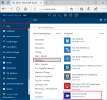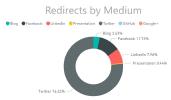NoSQL and Azure Cosmos DB in 20 Minutes
Everything you need to know about non-relational databases and how to use Azure Cosmos DB to stand up your own cloud-based solutions.
At Build 2018 I had the opportunity to present a short theater session focused on Azure Cosmos DB. I decided to divide the presentation into two parts. The first is an overview of relational databases and how they relate (see what I did there?) to non-relational or NoSQL databases. The second part demonstrates how Azure Cosmos DB provides a fully managed implementation of NoSQL that supports multiple APIs.

I demoed two projects as part of the talk. The full USDA database example implemented with the Mongo DB API is available here:
JeremyLikness/explore-cosmos-db
The flights example leveraging the Gremlin Graph API and the SQL API is available here:
anthonychu/cosmosdb-gremlin-flights
You can download the full deck by clicking here. One topic I was not able to cover in detail is consistency levels. This can be confusing to developers who haven’t worked with distributed non-relational databases, so I wrote a blog post to help explain consistency levels using the analogy of a billiards tournament.

Explore cloud NoSQL Azure Cosmos DB database consistency levels like “strong”, “bounded staleness” and “consistent prefix” using a billiards game analogy to explain what they mean.
This is the full video of my Build presentation:
If you like what you see and want to dig deeper, be sure to check out the recap from my full hour presentation at the DotNext conference. You can download the larger deck that has more explanations and details, as well as watch that presentation once the video becomes publicly available.
A few other blog posts you may want to explore:

Video walk through shows how to create an Azure Cloud-based NoSQL database with CosmosDB and connect from a .NET application using the SQL API in under 5 minutes.

Learn how I leveraged CosmosDB to store telemetry from a URL shortening tool, then analyze the data in a PowerBI dashboard.

Serverless data platform CosmosDB meets serverless compute platform Azure Functions in this example based on a URL link shortener that is used to track click-through metrics.
Ready to get started? You can click here to get started with the full Azure Cosmos DB documentation.
Regards,

Related articles:
- Azure Cosmos DB With EF Core on Blazor Server (Azure)
- Deep Data Dive with Kusto for Azure Data Explorer and Log Analytics (Azure)
- MongoDB on Windows in Minutes with Docker (Cosmosdb)
- Say “Yes” to NoSQL for .NET SQL Developers (Mongodb)
- The Year of Angular on .NET Core, WebAssembly, and Blazor: 2019 in Review (Azure)
- Using LINQ to Query Dynamic Schema-less Cosmos DB Documents (NoSQL)
